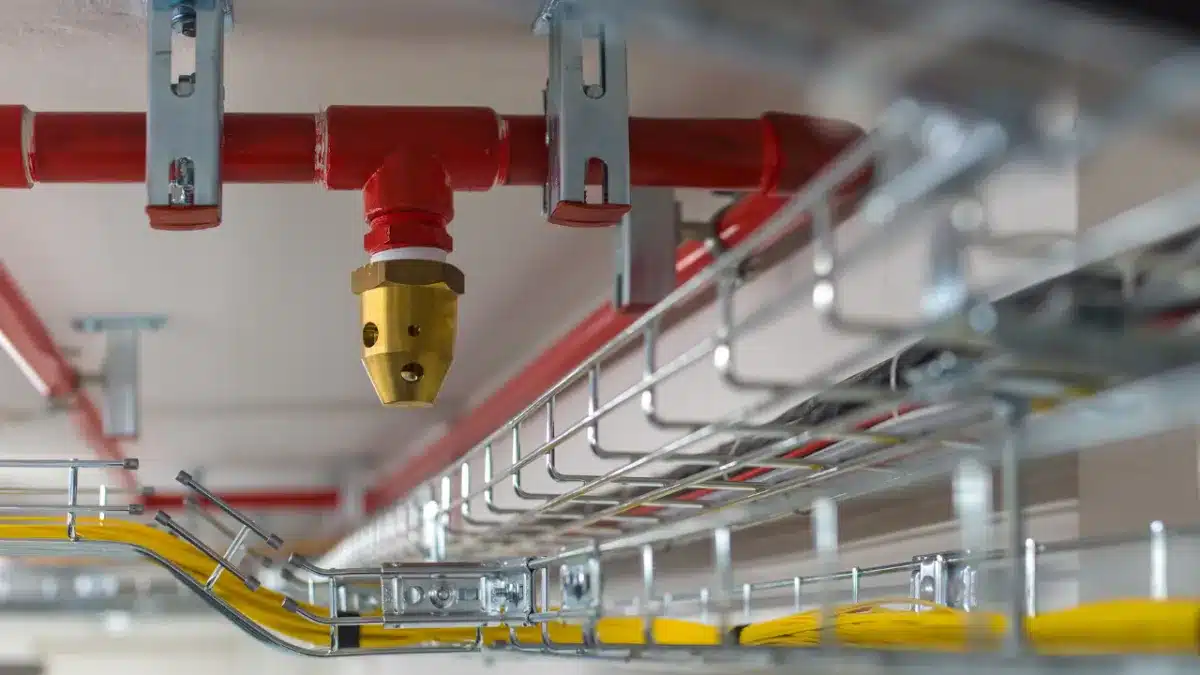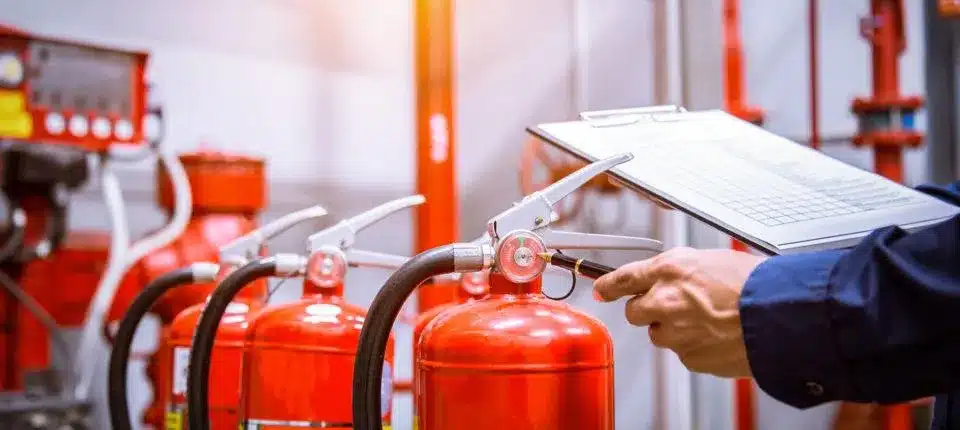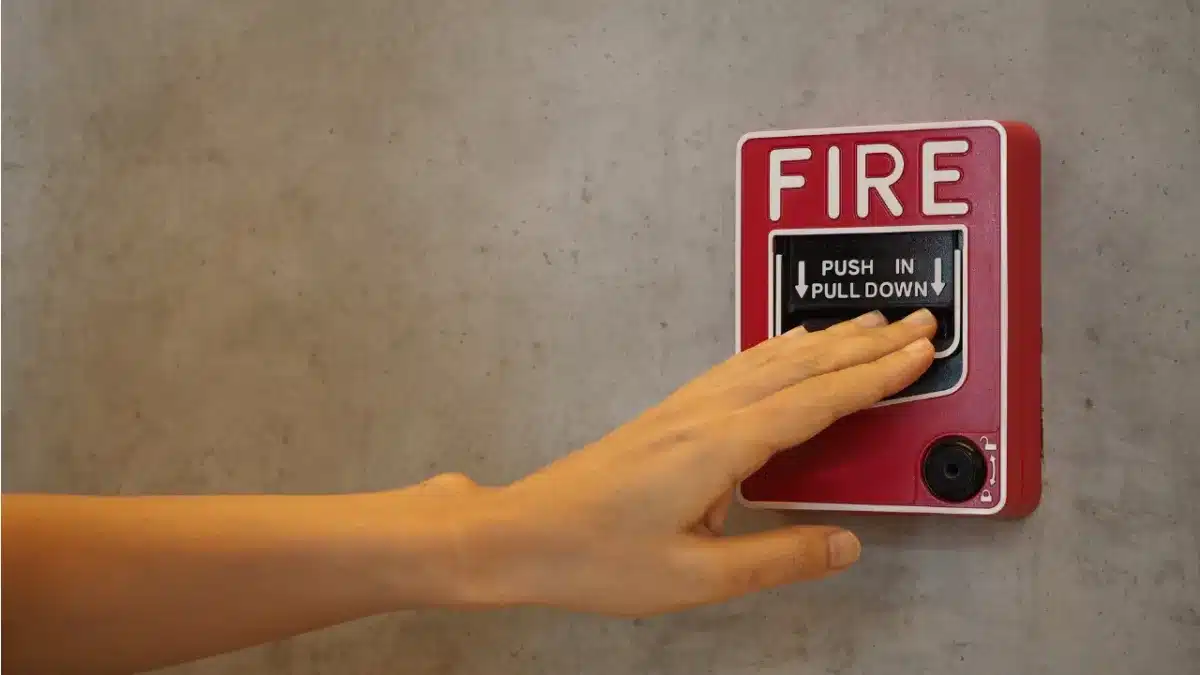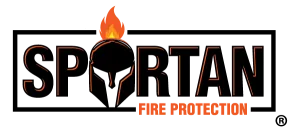Understanding The Different Types of Fire Sprinkler Systems

Wet Pipe Fire Sprinkler Systems
Wet pipe fire sprinkler systems are the most common type of fire sprinkler installation, found in commercial buildings, schools, and residential properties.
How they work: These systems contain water under pressure in the pipes at all times. When a sprinkler head detects sufficient heat, it activates immediately, releasing water onto the fire.
Advantages:
- Simple, reliable design with minimal components
- Quick response time
- Lower installation and maintenance costs
- Higher reliability due to fewer mechanical parts
Limitations:
- Not suitable for areas subject to freezing temperatures
- Not ideal for areas where water damage is a major concern
Dry Pipe Fire Sprinkler Systems
Ideal applications:
- Unheated warehouses
- Parking garages
- Cold storage facilities
- Attics in cold climates
Considerations:
- Slower response time (30-60 seconds delay)
- More complex design requires additional maintenance
- Higher installation cost than wet systems
Pre-Action Fire Sprinkler Systems
Types of pre-action systems:
- Single interlock: Releases water into pipes when fire is detected
- Requires both detection system activation and sprinkler head activation
Best for:
- Museums and art galleries
- Data centers and server rooms
- Electronics manufacturing
- Valuable document storage
Deluge Fire Sprinkler Systems
Applications:
- Aircraft hangars
- Chemical storage facilities
- Power plants
- Industrial settings with flammable liquids Features:
Features:
- Provides maximum water coverage
- Rapid response to fast-spreading fires
- Can be connected to foam or chemical suppression agents
Foam Water Sprinkler Systems
Ideal for:
- Oil refineries
- Aircraft hangars
- Chemical processing plants
- Flammable liquid storage areas
Water Mist Fire Sprinkler Systems
Benefits:
- Uses significantly less water than traditional systems
- Reduced water damage
- Effective for Class A, B, and C fires
- Environmentally friendly alternative to gaseous systems
Applications:
- Historic buildings
- Marine environments
- Machinery spaces
- Healthcare facilities
Residential Fire Sprinkler Systems
Features:
- Compact, less obtrusive sprinkler heads
- Can be integrated with home plumbing
- Quick response elements
- Focused on life safety rather than property protection
Selection Considerations
When choosing a fire sprinkler system, evaluate:
- Building occupancy and contents
- Local climate conditions
- Water supply availability
- Risk level and fire hazards present
- Installation and maintenance costs
- Local building codes and insurance requirements
- Environmental concerns
How We Can Help
The right fire sprinkler system provides crucial protection for both life safety and property preservation. While wet pipe fire sprinkler systems offer simplicity and reliability for standard applications, specialized environments may require more advanced solutions like dry pipe fire sprinklers, pre-action, or deluge systems. Professional evaluation by fire protection engineers like the certified professionals at Spartan Fire Protection is essential to determine the most appropriate system for your specific needs and to ensure compliance with applicable codes and standards.
Related Articles

Understanding and Preventing Industrial Fires: A Safety Guide
This guide empowers you to proactively safeguard your industrial facility by identifying fire risks, implementing preventive measures, and establishing effective emergency response plans.

A Guide To Understanding Commercial Fire Protection Systems
Gain clarity on essential commercial fire protection components, enabling you to design, implement, and maintain systems that ensure safety and compliance.

How Do Fire Alarm Systems Actually Work?
Understand the operation of fire alarm systems, helping you ensure timely detection, effective alerts, and proper maintenance for optimal safety.
